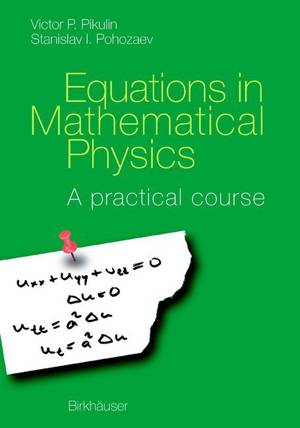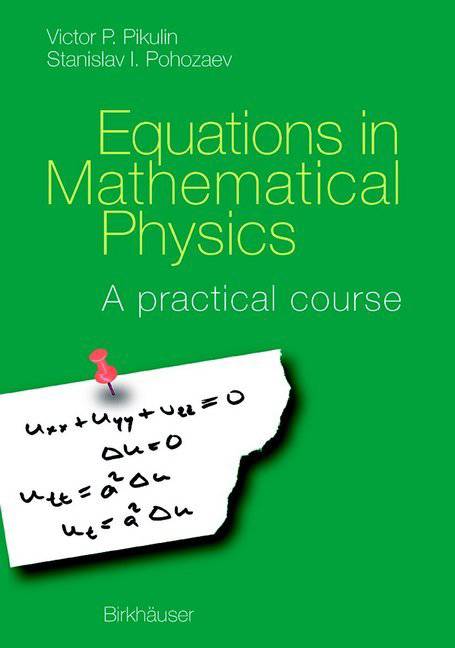
- Afhalen na 1 uur in een winkel met voorraad
- Gratis thuislevering in België vanaf € 30
- Ruim aanbod met 7 miljoen producten
- Afhalen na 1 uur in een winkel met voorraad
- Gratis thuislevering in België vanaf € 30
- Ruim aanbod met 7 miljoen producten
Zoeken
Equations in Mathematical Physics
A Practical Course
V P Pikulin, Stanislav I Pohozaev
Paperback | Engels
€ 97,95
+ 195 punten
Omschrijving
This handbook is addressed to students of technology institutf's where a course on mathematical physics of relatively reduced volume is offered, as well as to engineers and scientists. The aim of the handbook is to treat (demonstrate) the basic methods for solving the simplest problems of classical mathematical physics. The most basic among the methods considered hrre i8 the superposition method. It allows one, based on particular linearly indepmdent HolutionH (solution "atoms"), to obtain the solution of a given problem. To that end the "Hupply" of solution atoms must be complete. This method is a development of the well-known method of particular solutions from the theory of ordinar ' differelltial equations. In contrast to the case of ordinary differential equations, where the number of linearly independent 80lutions is always finite, for a linear partial differrntial equation a complete "supply" of solution atoms is always infinite. This infinite set of Holutions may be discrete (for example, for regular boundary vahlP problems in a bounded domain), or form a continuum (for example, in the case of problems in the whole space). In the first case the superposition method reduces to tlH' construction of a series in the indicated solution atoms with unknown coefficipnts, while in the second case the series is replaced by an integral with respect to the corm: iponding parameters (variables). This first step leads us to the general solution of the associated hOlllogeneous equation under the assumption that the set of solution atoms i;; "complete.
Specificaties
Betrokkenen
- Auteur(s):
- Vertaler(s):
- Uitgeverij:
Inhoud
- Aantal bladzijden:
- 207
- Taal:
- Engels
Eigenschappen
- Productcode (EAN):
- 9783034895033
- Verschijningsdatum:
- 23/08/2014
- Uitvoering:
- Paperback
- Formaat:
- Trade paperback (VS)
- Afmetingen:
- 156 mm x 234 mm
- Gewicht:
- 312 g

Alleen bij Standaard Boekhandel
+ 195 punten op je klantenkaart van Standaard Boekhandel
Beoordelingen
We publiceren alleen reviews die voldoen aan de voorwaarden voor reviews. Bekijk onze voorwaarden voor reviews.








